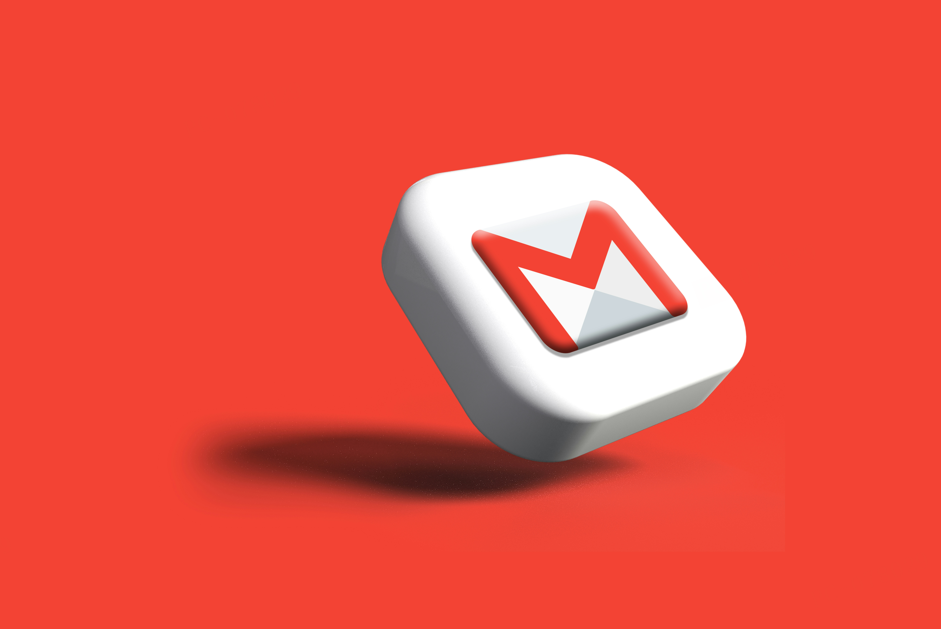What is Lead Generation Marketing?
In today’s competitive business landscape, Lead Generation Marketing has become the backbone of successful sales funnels. It’s the process of attracting and converting potential leads into interested leads, ultimately driving revenue growth.
Types of Lead Generation Marketing
Generally, Lead Generation Marketing can be divided into several types according to their functions:
Inbound Lead Generation: Focuses on attracting leads through valuable content (e.g., blogs, eBooks, webinars) and optimizing online channels like SEO and social media.
Outbound Lead Generation: Involves directly reaching out to leads through methods like cold calling, emailing, and paid advertising.
B2B Lead Generation: Targets businesses and organizations, often using platforms like LinkedIn, industry events, and account-based marketing (ABM).
Online Lead Generation: Leverages digital tools such as landing pages, lead magnets, and chatbots to capture and engage leads online.
Offline Lead Generation: Includes traditional methods like networking events, workshops, and community involvement to build personal relationships.
Hybrid Lead Generation: Combines online and offline strategies, such as hosting webinars followed by direct outreach or promoting events through online ads.

Why is it critical?
Companies with mature lead generation processes witness rapid revenue growth without exception, proving its critical role in modern business strategies.
But how can businesses stay ahead in 2025? Here’s a breakdown of the Top Lead Generation Strategies.
Top Lead Generation Marketing Strategies in 2025
1. Targeted Leads Capture for All Lead Generation Types
Capturing leads that align with your ideal lead profile is the very essential first step you should do.
With lead generation tools like LeadsNavi’s advanced data scraping and enrichment capabilities, you can identify and target high-quality leads across industries like education, real estate, and manufacturing.
It ensures you access verified decision-makers, saving time and improving conversion rates, in which way you may no longer be confused among the multiple lead choices in the market.
As the leads-to-sales ratio raised, countless time and energy will be cut.
2. Content Marketing for Inbound Lead Generation
Content is proven to be the ultimate lead generation tool for attracting targeted leads, and lead magnets like checklists, templates, and trials have proven their effectiveness in engaging leads.
The key point here is to use such resources to provide immediate value, addressing specific pain points and building trust with potential leads.
By creating high-quality, informative content that empowers and educates your leads with clear objectives and actionable insights, you position your business as a trusted authority in your industry.
A well-defined content marketing strategy ensures your lead understands not only your expertise but also how your solutions can benefit them with trustworthy services and smart solutions that align with their needs.
3. Paid Advertising for Outbound Lead Generation
Paid ads on platforms like LinkedIn, Google Ads, and social media may be rather effective than sending emails in some way in 2025, as the they enable precise targeting of specific demographics, industries, or job roles.
Nevertheless, choosing the right platform is crucial to maximize your ad ROI.
By tracking ad performance in real-time and optimizing targeting on varied platforms, you can ensure every dollar spent drives tangible results as you can constantly refine your messaging.


4. Email Marketing for Online Lead Generation
Email marketing remains a cornerstone of B2B lead generation, especially when personalized and targeted effectively.
However, one common challenge is reaching potential clients without their direct contact information.
When attempting to connect with potential leads, sending emails to invalid addresses can harm your email deliverability and sender reputation.
To avoid this, use mailgo’s email verification feature, which confirms whether a recipient’s email address exists and is active.
This ensures your messages reach real leads, improving response rates and protecting your email credibility.
Additionally, to expand your outreach, mailgo also offers an email guess feature.
This tool generates potential email combinations based on available information (e.g., first names, last names, and company domains), helping you identify and connect with more potential leads.
By leveraging these features, you can optimize your email marketing strategy, increase engagement, and build meaningful connections with your targeted leads.
5. Webinars & Events for Offline Lead Generation
Live interactions are lead generation services for qualifying leads and building trust with your VIPs.
With event tracking and analytics, real-time insights into leads' engagement is available for you to really understand and remember those special leads of higher value.
By analyzing event performance, you can refine your strategy to deliver more impactful experiences that drive conversions and foster stronger connections with your main leads.
How Can We Implement the Strategies?
The future of lead generation markftering seems to quite clear after getting to know the TOP Strategies, though it's definitely another task to actually practice it. Here are some actionable steps for you to start as a beginner:
1. Landing Page Builders
Multiple landing page builders can provide tools to create high-converting pages without coding, which should be the first step in your lead marketing campaign. And you may:
- Use templates optimized for lead generation, with clear CTAs and compelling headlines.
- Ensure your landing pages are mobile-friendly and load quickly to reduce bounce rates.
- Integrate forms and tracking tools to capture leads and measure performance effectively.
2. CRM Integration
CRM integration is then a vital step in streamlining lead generation and sales processes.
You can connect your CRM system with lead generation tools like LeadsNavi, to automatically capture and track lead interactions across multiple touchpoints.
In this step, your mission is to segment leads based on their behavior, prioritize high-value leads, and personalize follow-ups for better engagement.
Also remember to regularly sync and clean data to maintain accuracy and efficiency.
3. Analytics
Using the analytics tools to ensure the success of understanding your leads:
Track metrics like click-through rates, conversion rates, and cost per lead to assess performance.
Gain actionable insights with Google Analytics, LeadsNavi, or CRM dashboards to gain actionable insights.
Adjust your strategies based on data to improve ROI and campaign effectiveness.
4. Personalized Communication
Personalization is key to building strong relationships with leads.
Use data from CRM systems and analytics to tailor your messaging to the specific needs and interests of each lead.
For example, send personalized emails referencing their previous interactions and detailed personal information, such as sales perferrence or scheduled timeline.
This approach not only boosts engagement but also fosters trust and loyalty, making leads more likely to convert.


5. Consistent Engagement & Follow-Up
Consistent engagement is crucial as long-term service for leads through a successful B2B lead generation campaign.
Follow up promptly after initial interactions, such as webinar attendance or form submissions, to keep the conversation going.
By providing value and staying top-of-mind, you can build truly valuable relationships that lead to higher conversion rates.
Common Mistakes to Avoid
Avoid common pitfalls like unclear messaging, poor targeting, and inconsistent follow-ups. Neglecting analytics and failing to optimize campaigns based on data can also hinder success. Ensure your strategies align with your audience’s needs and preferences to maximize results.
1. Poor Landing Page Design
A landing page that is not visually appealing can drive potential leads away. Make sure there are no overly complex designs, cluttered layouts, and slow CTAs. Your focus should be on nice clean designs with clear messaging. You may want to test forms of layouts and CTAs to ensure that you capture your audience fully. Also, don't forget to optimize your forms as complicated ones can lead to higher abandon rates.
2. Ignoring Lead Nurturing
Lead nurturing is often an ignored step in the entire process which can lead to some lost opportunities. Try crafting drip campaigns and tailored content to nurture all your leads in every stage of lead generation marketing. Your follow-up communications should also be automated to make it easier for you to provide your leads with helpful resources and valuable offers. This way you slowly lead your targeted leads toward a decision to convert.
3. Not Aligning Sales & Lead Marketing
When there is a gap between sales and lead marketing, then it is very likely to be inefficient. It is also important to set common goals and KPIs for both of the teams. Come up with a strategy that includes frequent communication and collaboration in order to streamline processes and improve the quality of leads. Employ common systems like CRMs for the two teams to promote transparency and consistency.
4. Failure to Optimize for Mobile
Not optimizing your website for mobile devices can lead to higher bounce rates and reduced leads with an increase in mobile users. Focus on making your site responsive, fast, and user friendly across all devices. Capturing leads on-the-go becomes mobile optimization's primary focus.
5. Failing to Respond on Social Media
Social media leads can be generated easily, however, sporadic posting, failure to respond, and ignoring social media ads can make them ineffective. Create a schedule for regular posts, engage with users, and use ads to target social media leads. Interactions strengthens brand awareness while engagement gets good leads.


6. Focus on Single Channel
Limiting focus to one lead generation channel can be economically dangerous if the channel underperforms. Your focus must be spread across many channels like SEO, PPC, Email marketing, and even offline events. Basing B2B lead generation on multiple sources ensures a steady stream of leads and reduces reliance on one source.
7. Failing to Act on lead Feedback
Ignoring feedback from leads and leads can hinder your lead generation efforts. Gather insights through surveys, reviews, and testimonials, and use this feedback to refine your strategies. Positive reviews and referrals can also serve as powerful lead generation tools for attracting new leads and building credibility.
8. Neglecting Analytics and Testing
Ignoring data and failing to A/B test your campaigns can prevent you from optimizing your lead generation efforts. Use analytics tools to track metrics like click-through rates, conversion rates, and cost per lead. Continuously test and refine your strategies based on data-driven insights to improve ROI and campaign effectiveness.
Conclusion
In today’s fast-paced business environment, mastering lead generation marketing requires sufficient background knowledge, strong execution, and a strategic focus on connecting with the right people and building lasting relationships.
- Start by collecting accurate data to identify your audience using lead generation tools like LeadsNavi or CRMs to target high-quality leads.
- Engage leads through personalized content, ads, and multi-channel outreach to address their needs.
- Foster long-term connections via consistent communication, social engagement, and ongoing support to ensure loyalty and repeat business.
By integrating these practices with smart strategies, businesses can adapt to the demands of 2025, stay competitive, and achieve sustainable growth in an increasingly dynamic marketplace.